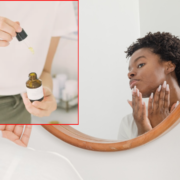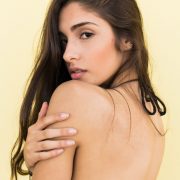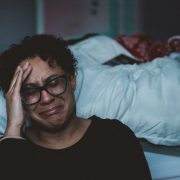The beauty industry has seen it all when it comes to lashes—magnifying mascaras, “miracle” growth serums, heated curlers—you name it. But no trend is quite as polarizing as eyelash extensions. When extensions first hit the mainstream market, it seemed like a relatively painless way to achieve wispy, fluttering lashes without the inconvenience of falsies or mascara. But as with any new beauty service, lash extensions quickly revealed their drawbacks. For starters, some states haven’t placed regulations on the service, consequently leading to cases of irritation, infection, and damaged natural lashes due to poor hygiene and technique.
The process is also fairly expensive, setting you back hundreds of dollars and hours of your personal time. But is it worth it to wake up with a flawless set of semi-permanent lashes every day. Eyelash extensions are semi-permanent fibers that are attached to your natural eyelashes in order to make your lash fringe look longer, fuller, and darker. Individual Eyelash extensions are applied to each of your individual natural eyelashes (one extension per natural eyelash) using a semi-permanent glue.
The material varies from studio to studio, but lash extensions can be made of synthetic, mink, faux mink, or silk fibers. Most studios offer a variety of extension lengths, curl patterns, and tints so clients can customize their look.
Types of Eyelash Extensions
Lash artists use three different kinds of eyelash extension materials: mink, silk, and synthetic. Some studios also carry “faux mink” extensions, which are technically just synthetic extensions that mimic mink extensions. Most lash studios have their preference for the type of lash extension they use and won’t always ask you if you have a preference. So if you’re vegan or allergic to cats, be sure to specifically request that mink lash extensions are not used on you. No lash extension type lasts longer than the other, but mink and silk lashes tend to have a more natural look, while synthetic lashes can be thicker and darker, which is better suited for those who want a bolder look.
Within these three categories (mink, silk, and synthetic), there are varying degrees of length and curl to choose from. Typically your lash artist will use multiple lengths and curl strengths to create a wide-eyed effect, with longer lashes being placed towards the outer corners of the eyes and shorter lashes placed on the inner corners.
What’s the Application Process Like?
“[Lash extensions] are carefully applied one at a time (typically 80-140 per eye) using a specially-formulated, semi-permanent glue that will not irritate or damage the natural lash,” says Richardson. “The lash is only applied to an existing lash, not to the skin.” While the exact process varies from salon to salon, here’s what you can expect:
Evaluation: “Prior to application, the technician should go through all the risks and benefits of having eyelash extensions before applying them, and also ask about any conditions you may have that would make eyelash extensions unsuitable for you,” says Richardson. They’ll also ask you to remove your contacts if you wear them.
Decide on Extension Length and Curl Strength: Your lash artist should start the process by asking you what kind of look you’re going for, whether that be more glamorous or more natural. Based on your desired look, you’ll choose an ideal length and curl strength for the extensions. Keep in mind that your artist may decide to use up to 3-4 different extension lengths, concentrating longer extensions on the outer corners and shorter extensions on the inner eyes.
-

1 Top 5 Vitamin C Serums
-

2 Facing Skin Issues this Winter? Follow these Dermatologically Recommended Tips for a Smooth Skin!
-

3 How To Get Salon-like Hair Colour At Home?
-

4 Five Easy Steps On How To Be A Beauty Guru
-

5 10 Beauty Services That Help You in Revitalizing Your Body
-

6 Sellers of Black Market Botox are Cheating Innocent Girls and Women on Social Media
-

7 Learn About the Benefits of Lash Extensions

